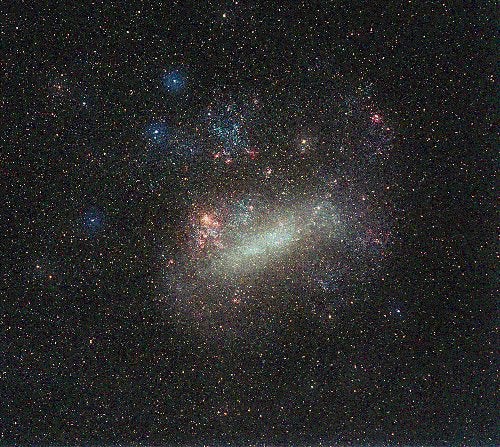Globular star clusters in the Large Magellanic Cloud (LMC), a satellite of the Milky Way galaxy, nearly all have ages of either about 13 billion years — or 3 billion years. Astronomers have puzzled over the big discrepancy in ages.
Researchers led by Kenji Bekki (University of New South Wales, Australia) now propose an answer rooted in the LMC’s gravitational interactions with the Milky Way and the Small Magellanic Cloud (SMC). Their work, which used computer simulations to model the history of the Large and Small Clouds and the Milky Way, appears in the Astrophysical Journal (August 1, 2004).
The oldest globulars, say the astronomers, date from not long after the Big Bang when both the Milky Way and LMC took shape. The younger globulars, however, began to form after the LMC had a close encounter with the SMC about 4 billion years ago. This, plus subsequent encounters between them, stirred the LMC’s gas and triggered the birth of the younger population of globulars starting around 3 billion years ago.
The researchers also discovered that the tidal interactions gave the LMC its central bar, seen in images. Another relic of the tidal interactions is a large, diffuse stream of old stars torn from the LMC that circles the Milky Way.










